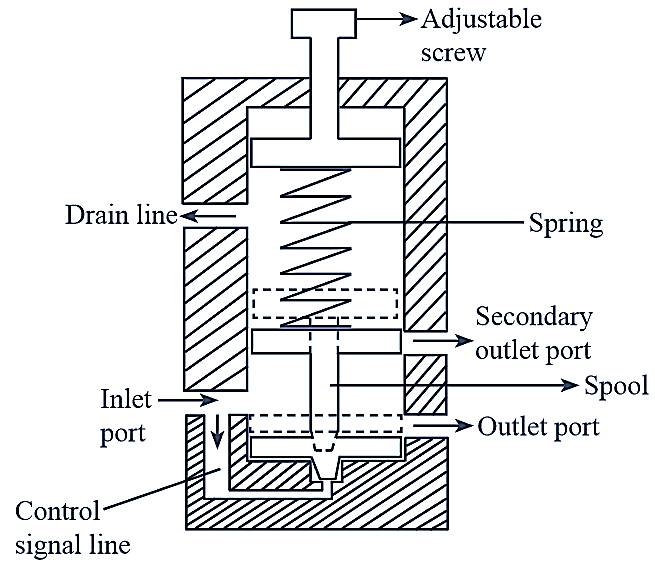Pressure sequence valve is a type of pressure control valve that is used in the applications where the two hydraulic cylinders are operating in a sequence, to allow the fluid flow to those cylinders in a pre-determined sequence.
Working of Pressure Sequence Valve
It consists of inlet and outlet ports which are connected to the pump and cylinder ‘A’ respectively. It also comprises of a secondary outlet port connected to cylinder ‘B’. The schematic arrangement of pressure sequence valve is shown in figure 1.

Figure 1: Pressure Sequence Valve.
Construction of Pressure Sequence Valve
When the valve is in its normal position as shown in figure 1, the fluid flows freely through the inlet port to outlet port. Flow to cylinder ‘A’ continues until its working stroke is completed. When the pressure in the system components connected reaches the preset value on the sequence valve, the control signal line transmit this pressure to the movable spool. Then, the spooi lifts against the spring force and secondary out port will open and outlet port will close (i.e., flow to the cylinder A is restricted). Thus, the fluid flows to cylinder B. When the outlet port is closed by spool, there is a possibility of leakage of fluid into the spring chamber. The leaked fluid will send out through the drain line. This type of valves are used in clamping and machining circuits.